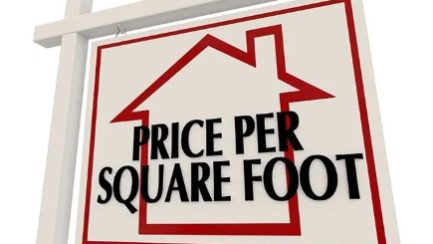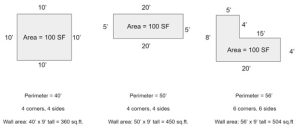In this article, author Ed Kubiak, Director of Builder Partnerships at Higharc reviews why a home’s cost per square foot can be misleading and what better questions there are to ask to determine whether a custom home price is competitive.
A prospective customer once asked me “how much do the homes you build cost per square foot?” Perplexed by the randomness of the question, I responded, “How much was your last car per pound?” The specification level between a Toyota Corolla, a Toyota Camry and a Lexus LX470 could vary considerably…and the weight difference between the three really has no bearing on its cost. It’s important to clearly define the question you are asking. Think about it: is the cost per square foot of a basic bedroom the same as a kitchen? Is the cost per square foot of your dream master bath suite the same as the shared bathroom for your kids? You wouldn’t walk into a store and ask “How much is a shirt?” so what makes it right to ask “How much is a home?” without defining it?
As a builder, if you tell me exactly what you want, I can tell you exactly what it will cost. So, what exactly do I need to know in order to give you an educated answer? Let’s define the “big three” cost drivers of design first, and then dial into the details from there. The “big three” cost drivers that must be considered at the beginning of the home design process are basic programming, building shape and home style.
Basic programming
How do you intend to use the space within your new home and how long do you plan to stay there? Are you looking to build a home that fits your current lifestyle or also your future lifestyle (e.g., without kids in 10 years)? It’s important not to start by defining the square footage you think you’ll need. People often consider the size of their current home and think they need more square footage because the family is growing or you have more stuff. That’s not always the case as less can sometimes be more! Think first about the bedroom and bathroom count and then think about how your family lives in your current space. Where does your family spend most of their time? Maybe you spend your time together in the kitchen dining and doing homework, but the kids have grown to where they need a quiet space to study. Maybe Mom and Dad need a quiet retreat for reading or a spa-like experience. Maybe you need an office, a gym or really want a jaw-dropping space to entertain your friends. Whatever your requirements might be, list them out in two columns, the “need to haves” and the “want to haves” and then prioritize them. It’s also helpful for the builder/architect to understand what you don’t like about your current home. All of the above will help define the square footage of the home that you truly need.
Building shape
The shape of a home can have much more to do with the cost than you think. Reflect back to your high school geometry classes for a minute. Picture a square, a rectangle and an “L” shaped polygon. If you need some help, refer to the diagrams below. All three shapes can have the same area while having a different perimeter, number of corners and number of walls. The cost of materials and labor will be directly affected by all of the above. It’s also important to consider standard sizes of materials to minimize waste. Conventional lumber is typically milled in 2’ increments. If the dimensions of your home are an odd number, you are likely paying to throw cut-off materials in the trash!
Basic geometry in relationship to area, perimeter and corners
Home style
Many people are familiar with Modern Farmhouse, Craftsman, French Country and Traditional style homes, but there are many more to choose from; each with aesthetic details that define its image. You should expect the cost for your home to mirror any other industry that puts a premium on style (i.e. clothing trends). Not only does attention to detail cost money, but so does supply and demand, thus current trends are expensive! A traditional home will lack the glamour of a Scandinavian Farmhouse-style home just as much as a Walmart suit falls short of custom fitted Armani. You shouldn’t expect that custom-built modern farmhouse-style home in Wellesley, MA that everyone loves on Houzz.com to cost the same as a production-built modern farmhouse-style home in Bettendorf, IA. Some home styles have a higher architectural experience than others and only you can decide where the bar on your home will be set.
Other factors
Aside from the “big three” cost drivers of home design, there are a multitude of other factors that can affect the cost per square foot calculation, but aren’t directly related to the architecture of the home. There’s no such thing as “builder standards”. Every builder has a set of specifications that are unique to them and then modified based on the buyer’s preferences which are often referred to as “material allowances”. Location, site details and timing can also attribute to the total cost to build your new home. It’s also important not to compare the cost per square foot of a new home to the cost of a resale home. Digging deeper on these other factors is an article of its own.
So now that you have this new knowledge on how cost per square foot can be defined, how would you rephrase the question to a builder? Rather than “how much do your homes cost per square foot”, you might ask “how much did a specific home on your website cost to build?”. It’s much easier to compare your vision of a dream home to something that’s already been built because it is a real product rather than a concept. Builders have a shared interest in helping you understand the costs involved with building a home, but need your full definition of a home before they can confidently and accurately respond to your question.



